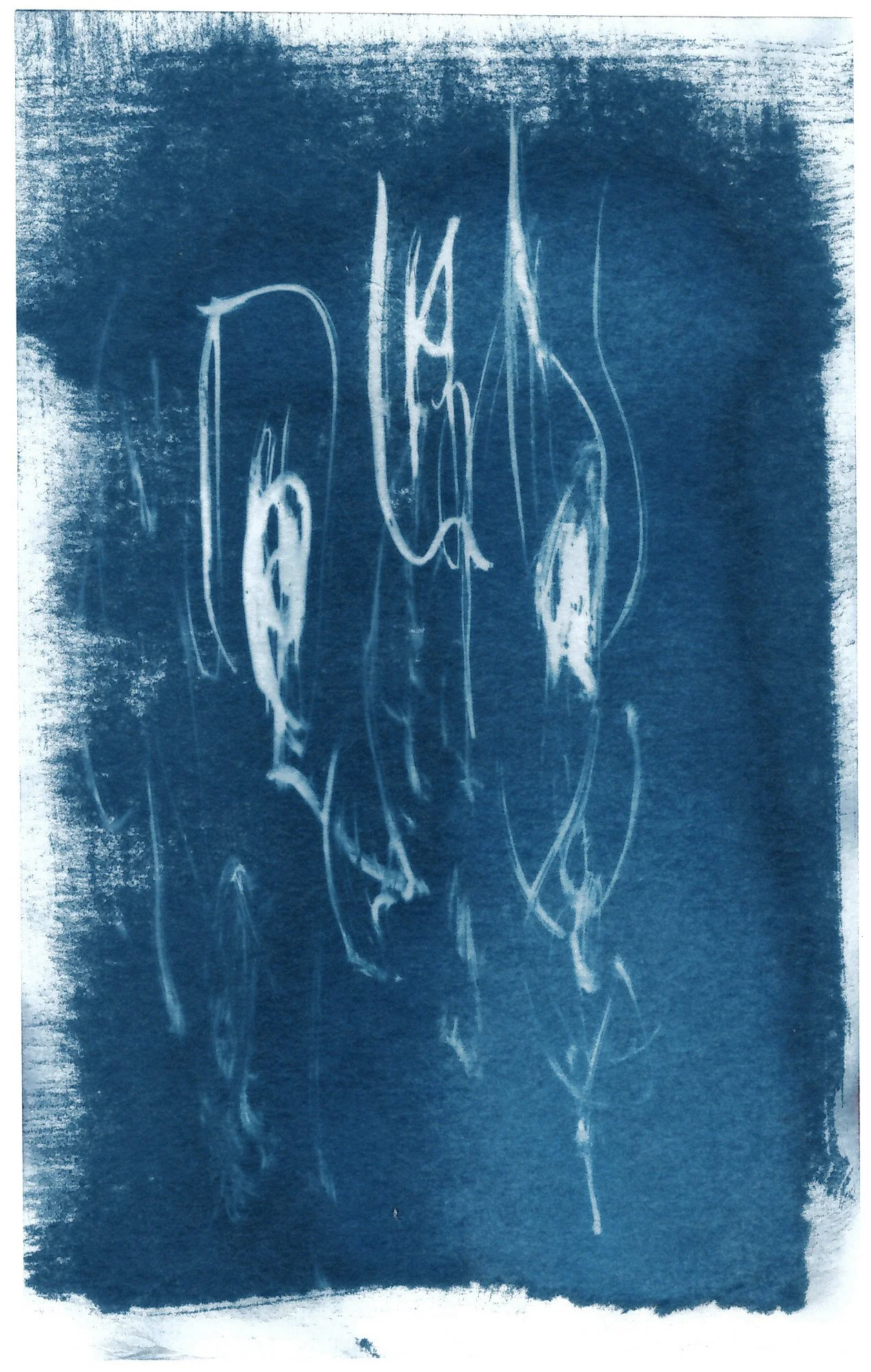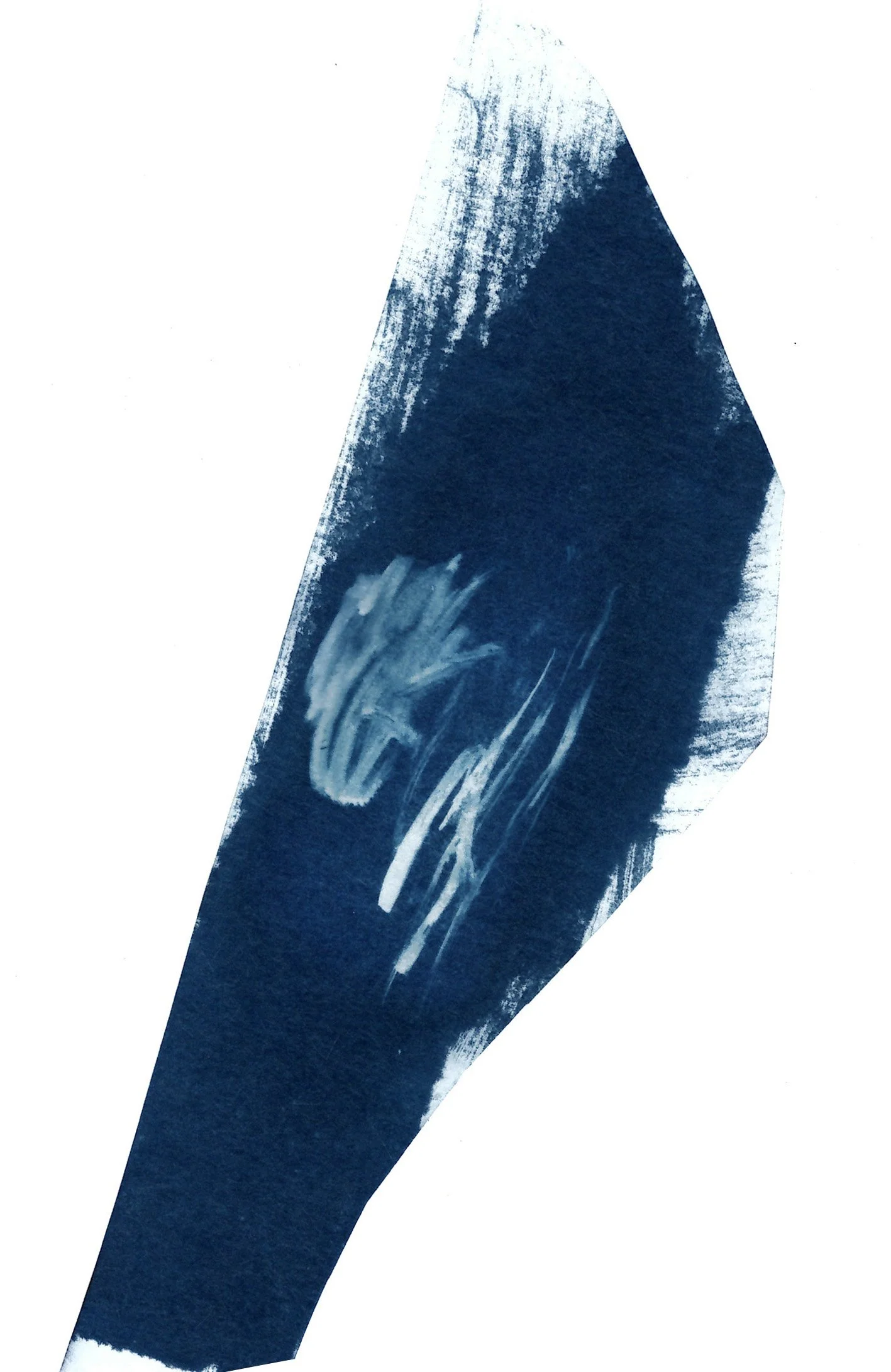When the form does not quite take shape
These works originated from a movement based workshop led by Ayako Kato in which participants explored the “Art of being,” focusing on the “point of origin.”
Throughout the session, I isolated specific movements such as lifting of my leg and rotating and shaking my ankle, whilst the rest of my body stayed still, pressed into the floor.
In this exercise, I focused on movement that did not feel “right,” noticing when I “needed to adjust” or it was “time to move on.”
The cyanotype series “When the form does not quite take shape,” explores how these “knowings” came to be.
Perhaps they may begin, not with knowing, but simply having a desire to know, to recognize when we need something different, when we are misaligned.
As I continued my series of movement isolations, both on and across the floor, I noticed when I felt awkward, which movements felt unsteady, unbalanced - which needed support to sustain. “When the form does not quite take shape.”
My movements paralleled a psychological feeling of when the subtle, intuitive “knowing what you need,” is not quite clear, acted on, or resolved in its entirety. There lives a brief tension as one approaches clarity. Relief comes in recognizing the eagerness and ability to respond, to move through and move on. A progression in movement occurs, allowing the next form to take hold.
In this work, I again return to process in place of absolutes. In considering how one’s intuition forms, there is no guarantee in its accuracy, simply that it lives and pays attention, that the form is willing to respond.
Cyanotype series on blend of polyester and nylon
August - October 2025



